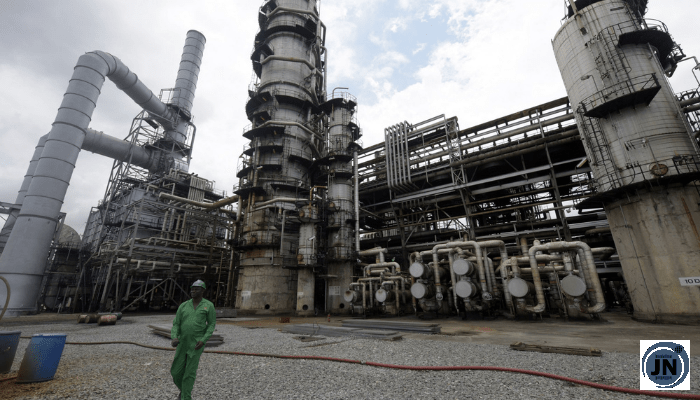Less than a month after the Port Harcourt Refining Company reportedly resumed operations following an extensive rehabilitation, the facility has once again ceased functioning, leading to widespread concerns and speculations about the state of the refinery.
Findings by Saturday PUNCH revealed that during a visit to the refinery on Thursday, December 19, 2024, operations had completely halted. Notably, the loading of Premium Motor Spirit (PMS), commonly referred to as petrol, had come to a standstill.
On observation, the 18-arm loading bay of the refinery, which had been recently rehabilitated, was deserted, with no visible activity or movement. This was a stark contrast to the bustling scenes expected at such a facility.

According to reports, the loading of petrol had stopped a week earlier, on Friday, December 13. During the visit, 18 trucks were parked along the road leading to the refinery, while nine more were stationed in the parking yard. However, the loading bay remained inactive, with no operations taking place.
A $1.5 Billion Rehabilitation Project
The refinery, celebrated as a major milestone, had officially resumed operations on November 26, 2024, following a $1.5 billion rehabilitation project approved in March 2021. The re-commissioning ceremony was led by Mele Kyari, CEO of the Nigerian National Petroleum Company Limited (NNPCL), and marked by fanfare. Initial reports claimed that 200 trucks were loaded during the inauguration; however, subsequent investigations suggested that less than 10 trucks were actually filled.
Reports further indicate that the petrol distributed during the launch event may have been old stock from storage tanks rather than newly refined products. Following the ceremony, operations quickly declined, raising doubts about the sustainability and functionality of the refinery.
Three weeks ago, the loading bay was observed to be inactive, which officials attributed to equipment calibration and the removal of water from old fuel stocks to prepare for new supplies. Two weeks later, operations briefly resumed, with a small number of trucks loading fuel. During this period, the refinery’s Managing Director, Ibrahim Onoja, stated during a media tour: “The plant is running, and we are trucking out our products. We have carried out an extensive revamp of this plant and changed most of the equipment. The pump and instrumentation, the cables are all brand new. So what we have done here is a massive change and upgrade of the plant.”
Despite these claims, operations remained sporadic, with fewer than 20 trucks being loaded daily before activities came to a complete halt again one week ago.
Currently, only a few truck drivers remain on-site, many of whom are seen sleeping in their vehicles while awaiting any updates on loading activities. A driver interviewed by The Punch expressed skepticism, noting that while there were rumors of operations resuming on Monday, there was little evidence to support these claims.
In addition to the halted operations, a petroleum product marketer, Mr. Dappa Jubobaraye, criticized the situation, alleging that the resumption was merely a publicity stunt. “It was all just for show,” he stated. “No meaningful production has taken place since the inauguration. They wanted to create the impression that the refinery is functional, but it’s not.”
The marketer also highlighted technical issues, such as the malfunctioning of loading arms. He explained that out of the 18 loading arms available, only three were operational, and even those had leakages. Furthermore, he noted that only PMS was being loaded, with no operations for DPK (kerosene) or AGO (diesel), products vital to the average citizen.
Another concern raised was the prolonged waiting time for truck drivers, with some drivers reportedly waiting for weeks without loading any products. “How can you come here with the hope of loading and end up waiting for two weeks with no progress?” one driver lamented. “Even when they were operational, they barely managed to load 10 to 15 trucks a day.”
The lack of activity at the facility has also affected the workforce. Security personnel stationed around the depot and loading bay were seen idling, with no operations to oversee. The once-bustling facility has become eerily quiet, raising questions about the refinery's long-term viability and the effectiveness of the rehabilitation project.
In conclusion, while the rehabilitation of the Port Harcourt Refinery was initially celebrated as a significant achievement, the current state of the facility suggests otherwise. Stakeholders and the public continue to await concrete steps from the government and NNPCL to address these issues and ensure the refinery operates at full capacity.

